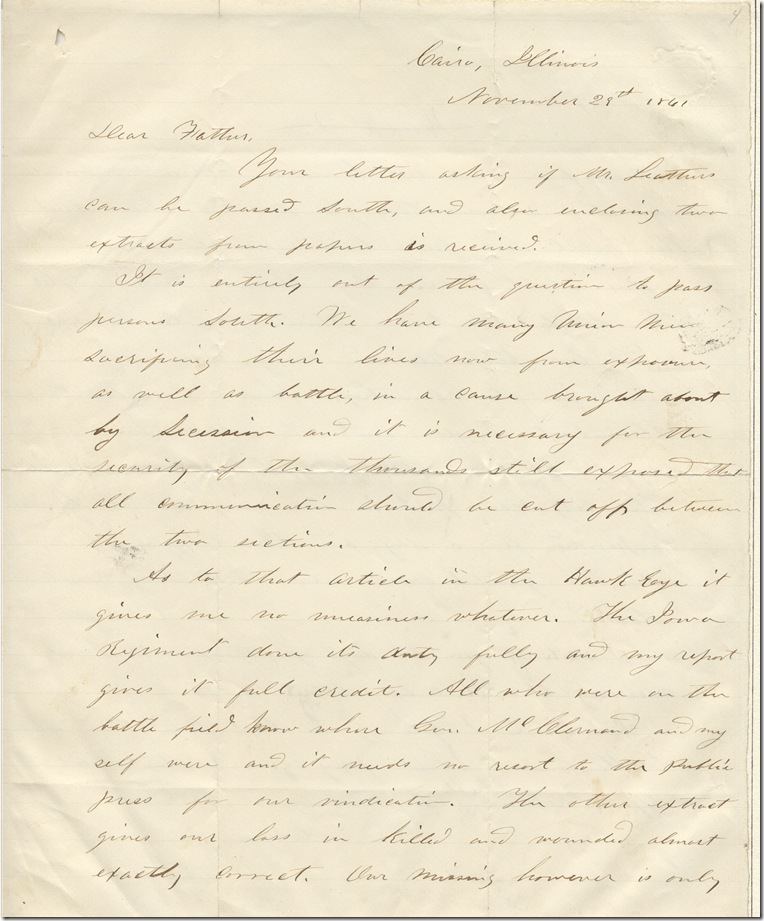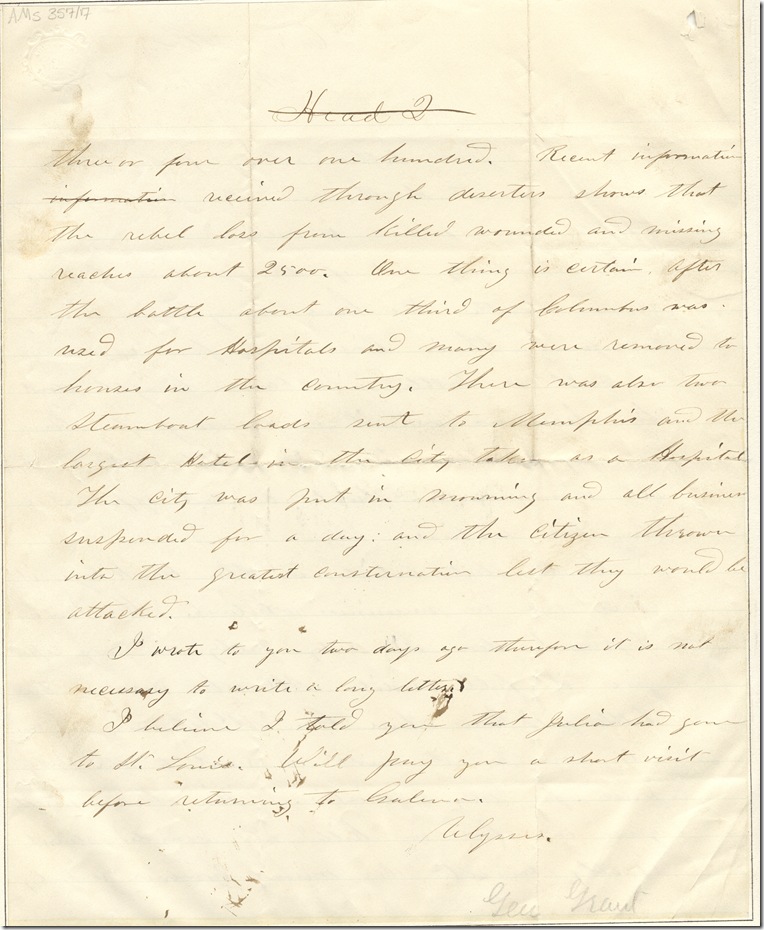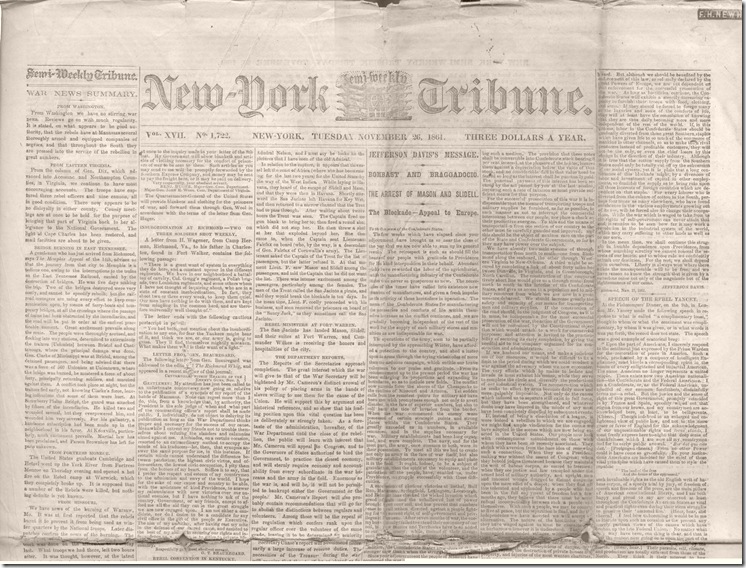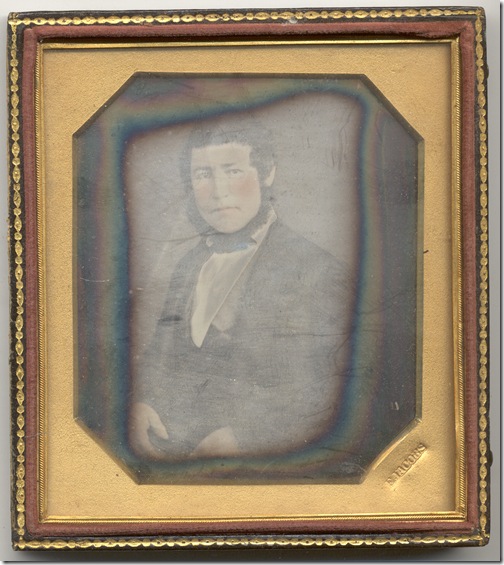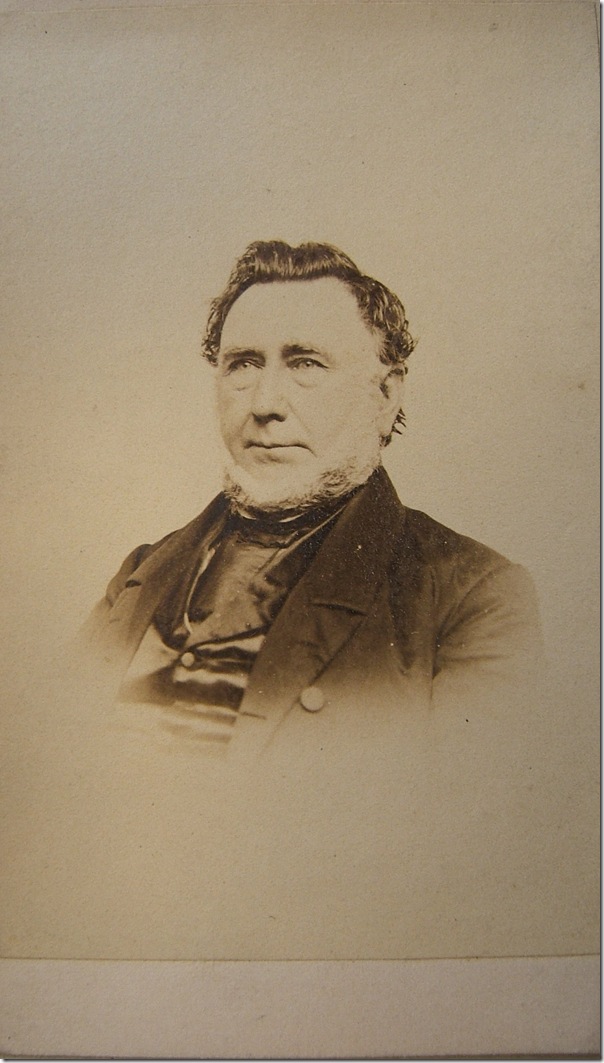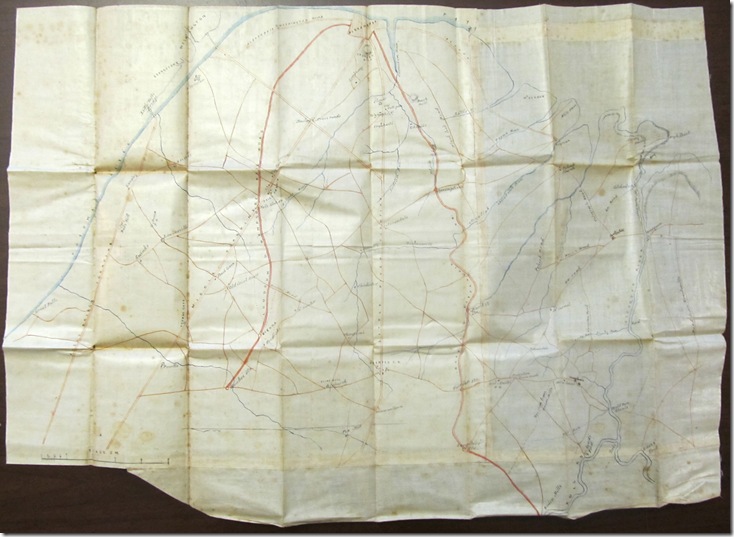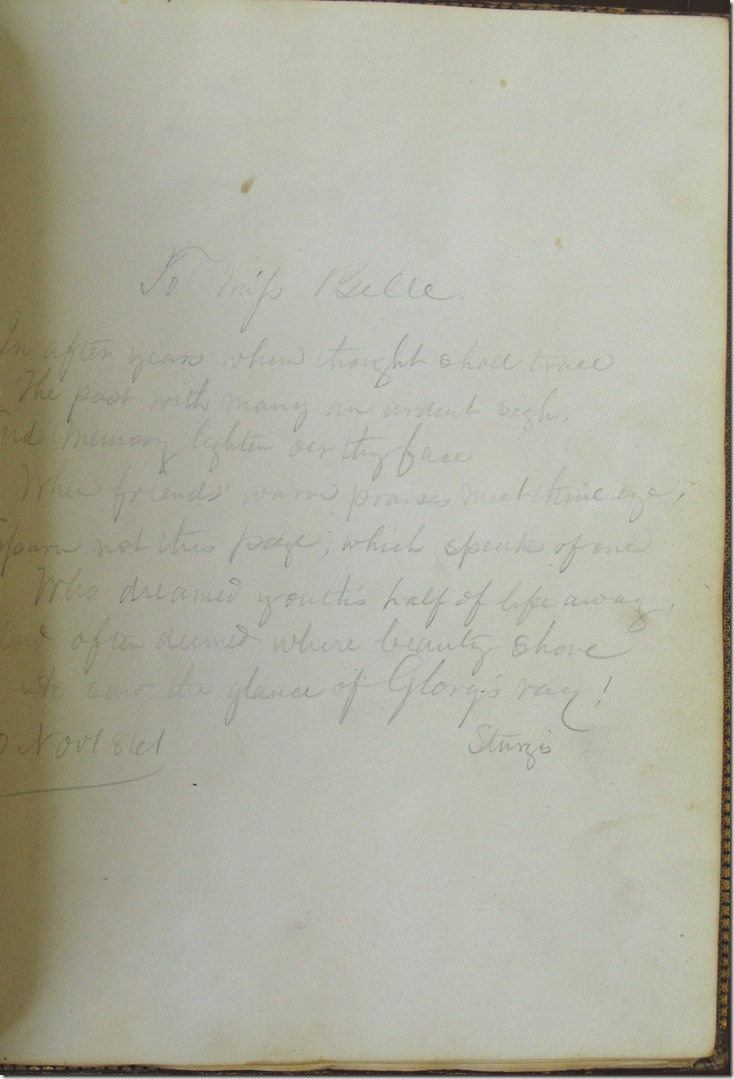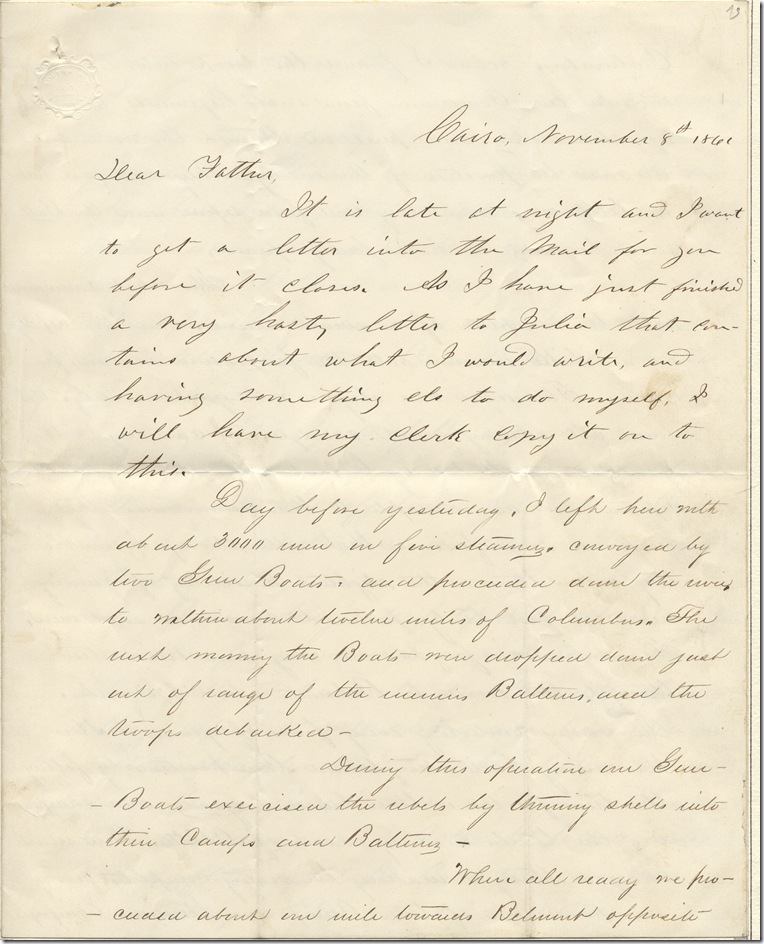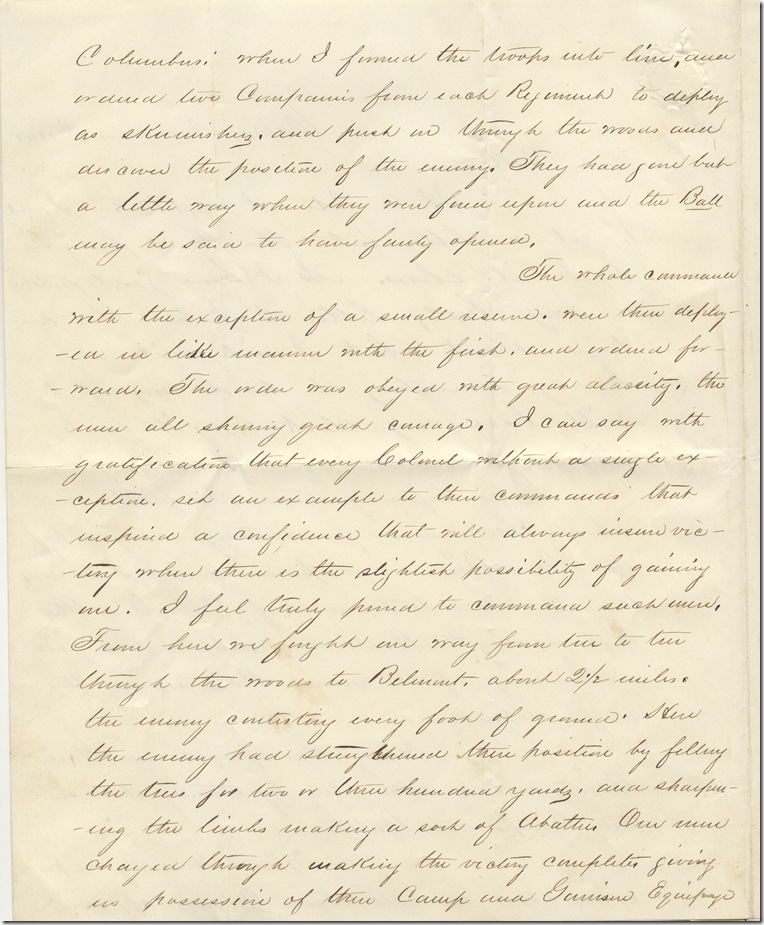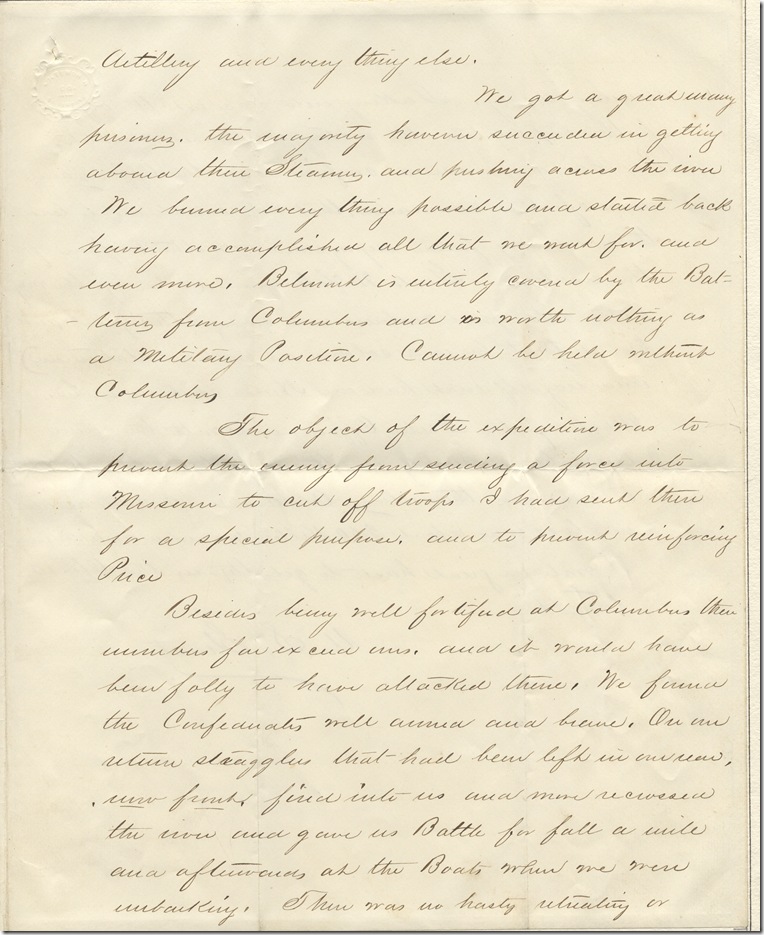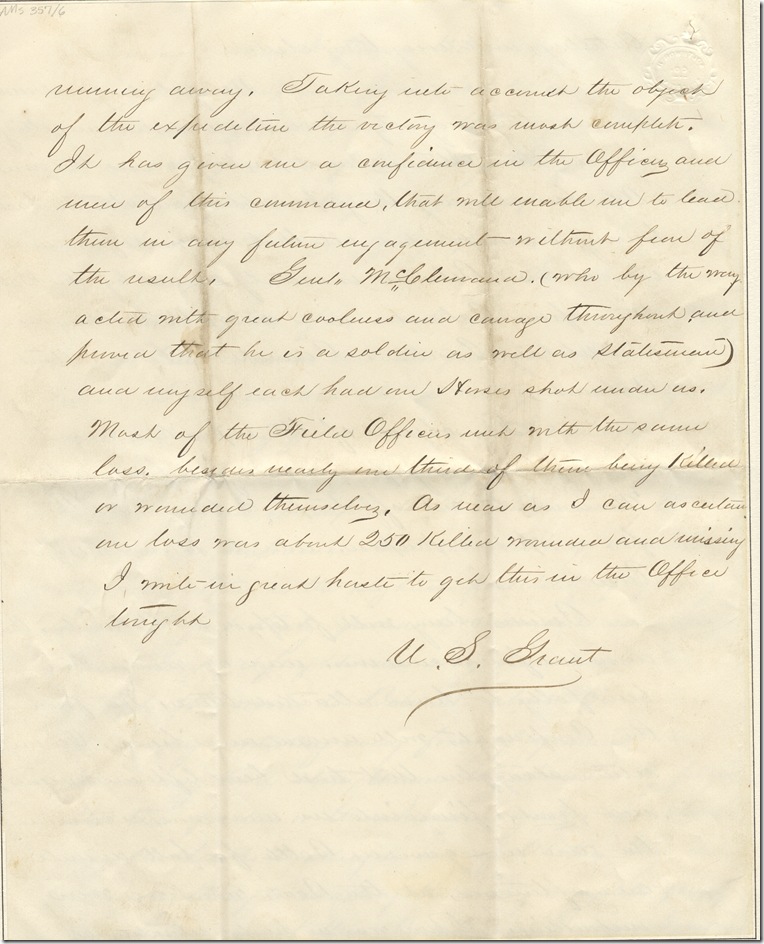Transcript:
Cairo, Illinois
November 29th 1861
Dear Father,
Your letter asking if Mr. Leathers can be passed South, and also enclosing two extracts from papers is received.
It is entirely out of the question to pass persons South. We have many Union men sacrificing their lives now from exposure, as well as battle, in a cause brought about by Secession and it is necessary for the security of the thousands still exposed that all communication should be cut off between the two sections.
As to that article in the Hawk Eye it gives me no uneasiness whatever. The Iowa Regiment done its duty fully and my report gives it full credit. All who were on the battle field know where Gen. McClernand and myself were and it needs no resort to the public. Press for our vindication. The other extract gives our loss in killed and wounded almost exactly correct. Our missing however is only
Head 2
three or four over one hundred. Recent information information received through deserters shows that the rebel loss from killed wounded and missing reaches about 2500. One thing is certain, after the battle about one third of Columbus was used for hospitals and many were removed to houses in the country. There was also two steamboat loads sent to Memphis and the largest hotel in the city taken as a Hospital. The city was put in mourning and all business suspended for a day and the citizens thrown into the greatest consternation lest they be attacked.
I wrote to you two days ago therefore it is not necessary to write a long letter. I believe I told you that Julia had gone to St. Louis. Will pay you a short visit before returning to Galena.
Ulysses
Citation: Ulysses S. Grant (1822-1885), autograph letter signed to Jesse Root Grant. Cairo, Ill., 29 November 1861. AMs 357/7
